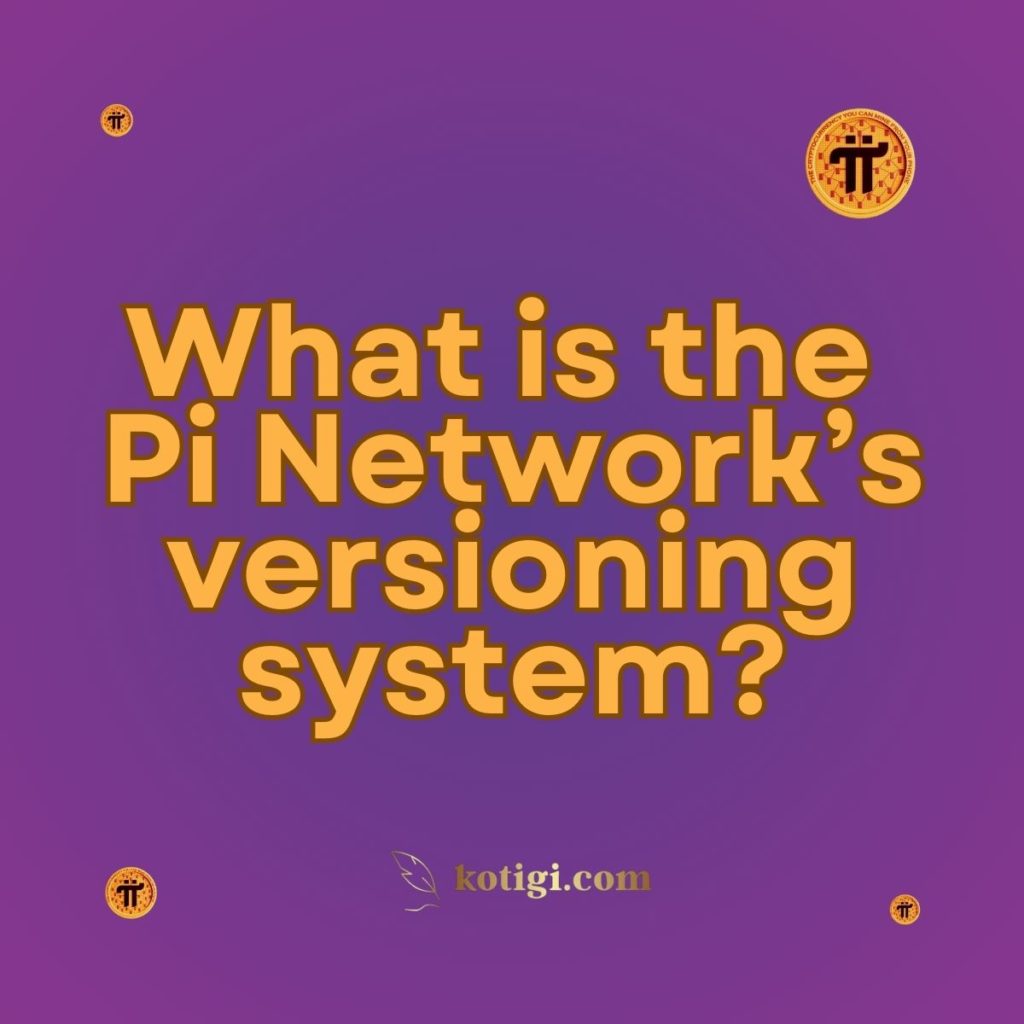
What is the Pi Network’s versioning system?
The Pi Network employs a systematic versioning system that ensures clear organization and tracking of software updates and changes. This system allows developers and users to monitor the evolution of the platform and stay informed about the latest features and improvements. By following a structured approach to versioning, the Pi Network enhances transparency and usability for its community. For detailed information about the updates, visit the Pi Network Update page.
Introduction
In the rapidly evolving world of blockchain technology and cryptocurrency, maintaining a robust and efficient platform is crucial for long-term success. One way that the Pi Network ensures this is through its versioning system, which tracks and manages software updates and modifications. This systematic approach not only aids developers in enhancing the platform but also keeps users informed about the latest features and improvements. Understanding the Pi Network’s versioning system is essential for both users and developers who wish to navigate and contribute effectively to the platform. In this article, we will explore the components, significance, and implications of the Pi Network’s versioning system.
Overview of Versioning Systems
Versioning systems are critical in software development, providing a way to manage changes, track progress, and ensure consistency across updates. These systems typically employ a numerical or descriptive scheme to indicate the evolution of software over time. A well-implemented versioning system allows developers to maintain clarity and organization, making it easier to roll back changes if necessary and communicate updates to users.
What is a Versioning System?
A versioning system refers to the methodology used to label different iterations of software as it evolves over time. Each version indicates changes made to the software, whether they involve bug fixes, new features, or significant overhauls. Common practices in versioning include Semantic Versioning, which uses a three-part numbering system (major.minor.patch), to signify the nature and impact of changes made.
Importance of a Versioning System
Implementing a versioning system is crucial for various reasons. Firstly, it provides a historical record of changes, which is invaluable for troubleshooting and understanding the development trajectory of a project. Secondly, a versioning system aids in communication between developers and users, ensuring that everyone is aware of the current state of the software and any recent updates. Lastly, it establishes a framework for managing software dependencies, which is particularly important in complex systems where various components interact.
The Pi Network’s Versioning System
The Pi Network’s versioning system is designed to keep its community informed and engaged while enabling developers to enhance the platform effectively. This system allows for efficient management of updates and provides users with a clear understanding of the current state of the network.
Versioning Scheme
The Pi Network employs a structured versioning scheme that typically includes three levels: major, minor, and patch. This approach aligns with the Semantic Versioning model, allowing users to discern the significance of each update at a glance.
- Major Version: This indicates significant changes that may introduce new features or alter existing functionality. Users should pay special attention to major version updates, as they may affect how the network operates.
- Minor Version: Minor updates generally include improvements or additions that do not disrupt existing functionality. These updates are often intended to enhance the user experience or address performance issues.
- Patch Version: Patch updates focus on bug fixes and minor improvements. They are typically released more frequently and aim to enhance the overall stability of the network without introducing new features.
Communication of Updates
To ensure that users are aware of the latest developments, the Pi Network utilizes multiple communication channels. One primary source of information is the Pi Network Update page, where users can find detailed descriptions of recent changes and enhancements. This platform serves as a central repository for information, enabling users to stay informed about the latest improvements to the network.
User Engagement
User engagement is a vital component of the Pi Network’s versioning system. The network actively encourages community feedback regarding updates and changes, allowing users to voice their opinions and contribute to the evolution of the platform. This feedback loop helps developers prioritize features and enhancements based on user needs, ensuring that the platform remains user-centric.
Benefits of the Pi Network’s Versioning System
The Pi Network’s versioning system offers several benefits that contribute to the platform’s overall functionality and user experience. These advantages are critical for maintaining a vibrant and engaged community.
Clarity and Transparency
By implementing a structured versioning system, the Pi Network promotes clarity and transparency regarding updates and changes. Users can easily track the evolution of the platform and understand the implications of each update. This transparency fosters trust within the community, as users feel more informed and empowered regarding the network’s development.
Improved User Experience
The versioning system enhances the user experience by ensuring that updates are rolled out systematically and thoughtfully. Users can expect a certain level of stability and reliability, knowing that the Pi Network is continuously improving its platform based on user feedback and developer insights. This focus on user experience is essential for fostering long-term engagement and satisfaction.
Encouraging Developer Contributions
A well-defined versioning system makes it easier for developers to contribute to the Pi Network. By providing clear guidelines regarding changes and updates, developers can focus on building new features and enhancements rather than navigating confusion about the current state of the codebase. This clarity encourages more developers to engage with the platform, ultimately driving innovation and growth.
Challenges in Managing a Versioning System
While the benefits of a versioning system are significant, there are challenges that the Pi Network must navigate to maintain an effective framework for managing updates.
Ensuring Consistency
Maintaining consistency in versioning practices can be challenging, especially as the number of developers contributing to the codebase increases. The Pi Network must establish clear guidelines for versioning practices to ensure that all contributors adhere to the same standards. This consistency is crucial for maintaining clarity and preventing confusion regarding updates.
Balancing Innovation and Stability
Striking the right balance between innovation and stability is another challenge inherent in managing a versioning system. While it is essential to introduce new features and enhancements, it is equally important to ensure that these changes do not compromise the stability of the platform. The Pi Network must carefully evaluate each update to determine its potential impact on user experience and overall functionality.
Communicating Effectively
Effective communication is critical for a successful versioning system. The Pi Network must ensure that updates are communicated clearly and promptly to users, reducing the risk of misunderstandings or confusion. This includes not only the announcement of updates but also providing detailed information about the implications of changes and encouraging user feedback.
Conclusion
The Pi Network’s versioning system is a vital aspect of its development and growth. By implementing a structured approach to versioning, the network fosters transparency, enhances user experience, and encourages developer contributions. The system’s focus on clear communication and user engagement ensures that the community remains informed and involved in the evolution of the platform. As the Pi Network continues to develop and grow, its commitment to maintaining an effective versioning system will be crucial in navigating the complexities of software updates and ensuring the long-term success of the network.
Key Takeaways:
- The Pi Network employs a structured versioning system to manage software updates and track changes effectively.
- The versioning scheme includes major, minor, and patch updates, allowing users to discern the significance of each change.
- Clear communication of updates through platforms like the Pi Network Update page fosters transparency and trust.
- User engagement and feedback play a crucial role in shaping the platform’s evolution.
- Balancing innovation with stability and ensuring consistent practices are essential challenges for maintaining the versioning system.
- The commitment to an effective versioning system is vital for the long-term success of the Pi Network.





